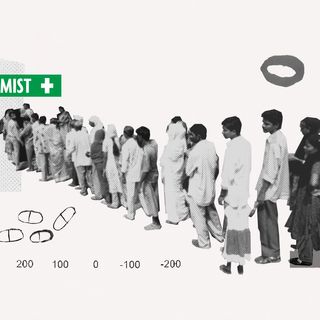On March 24, Prime Minister Narendra Modi imposed a 21-day, total coronavirus lockdown in India, joining a slew of countries, such as the United Kingdom, Belgium, Spain, Italy, and China, that have taken this extreme measure in the wake of an exponential rise in Covid19 cases. In a televised speech addressing the nation’s 1.3 billion, he said, “If we listen to the health experts, we know that 21 days are crucial to break the cycle of transmission.”
For weeks now, health experts around the world have debated the efficacy of complete lockdowns — they alone can’t fight the coronavirus, World Health Organization top emergency expert Mike Ryan said on BBC’s Andrew Marr Show. “What we really need to focus on is finding those who are sick, those who have the virus, and isolate them, find their contacts and isolate them,” Ryan said. “The danger right now with the lockdowns … if we don’t put in place the strong public health measures now, when those movement restrictions and lockdowns are lifted, the danger is the disease will jump back up.”
Related on The Swaddle:
In Joint Families, Social Distancing Is Not Only About Limiting Contact With Outsiders
There is no doubt a 21-day lockdown can put the brake on transmissions — epidemiologists told the New York Times even 14 days is enough for the virus to die out on surfaces, as long as people freeze in place. But, the lockdown needs to be accompanied by proactive, stringent measures to mitigate potential vectors of infection and its symptoms, even while the world awaits a vaccine. Otherwise, the practice is tantamount to shutting the virus behind closed doors. When these doors open, and routine interaction and exposure ensue, the pandemic can pick right back up where it left off.
In the past week, India has roped in national laboratories and given access and guidelines to private testing facilities to start administering Covid19 tests. Twenty-two private lab-chains, with 15,000 test collection centers combined, across Maharashtra, Tamil Nadu, Gujarat, Haryana, Delhi, and Karnataka, are set to provide Covid19 tests at no more than Rs. 4,500. However, the government needs to clarify who qualifies for these tests — for which an in-home service will also soon be available; so far, the problem with testing in India has been it doesn’t include people who cannot provide a history of travel or exposure to a confirmed Covid19 case. The increased testing needs to widen its ambit, otherwise, even under lockdown, we will not be able to catch all coronavirus cases or preempt infection in those for whom the illness can lead to severe, life-threatening symptoms. The testing also needs to be accessible and affordable, which it is not currently. How, if at all, the government plans on catching, isolating, and treating Indians across income lines, then, remains unclear.
Additionally, with an absolute ban on going outside — met with hefty fines and up to two years in jail if violated — and a moratorium on public transport, the government needs to clarify how individuals are supposed to seek healthcare not only for symptoms that don’t qualify as Covid19, but also for other needs, such as pre-existing conditions, pregnancies, abortions, and other emergencies. Without such guidelines, the lockdown will be reduced to an approach called “suppression,” according to one of India’s foremost epidemiologists, Jayaprakash Muliyil, which “would mean hurting each other, exploitation, giving power to wrong kinds of people. That is not my response to a public health emergency.”
Related on The Swaddle:
Unresponsive Helplines, Limited Testing Are Leaving People Suspicious of Their Covid19 Status
“This economic crisis calls for urgent, massive relief measures. Lockdowns may be needed to slow down the epidemic, but poor people cannot afford to stay idle at home. If they are asked to stay home, they will need help,” Belgian-Indian economist, Jean Dréze, writes for The Hindu. Otherwise, we run the risk of exacerbating what he called an “economic tsunami,” in which migrant workers remain stuck away from their homes, daily wage laborers are unemployed, and farmers are worrying if their harvest will reach consumers.
During the next three weeks, with most sectors shut down, how Indians are supposed to access and afford food and medicine remains unclear; how they’re supposed to pay rent and other bills remains unclear; how they’re supposed to seek healthcare and get closure on their Covid19 status remains unclear. This 21-day lockdown will stay the pandemic for the time being, but what happens when it lifts will only become discernible by the government’s efficient communication and mitigation response in the next 21 days. Let’s hope that happens.




